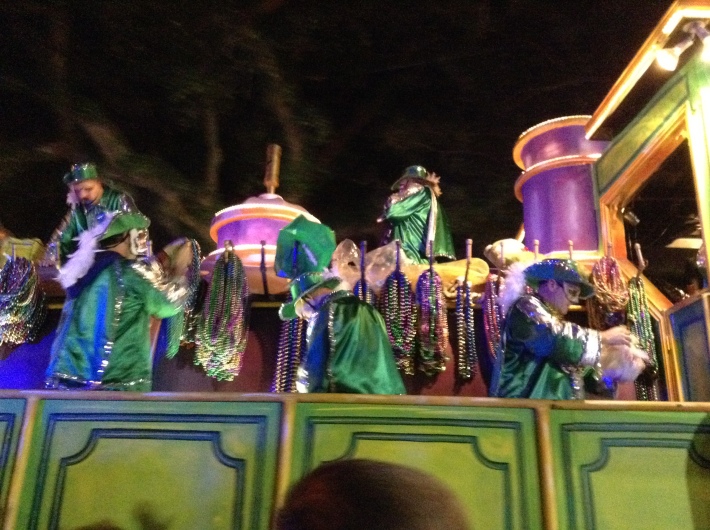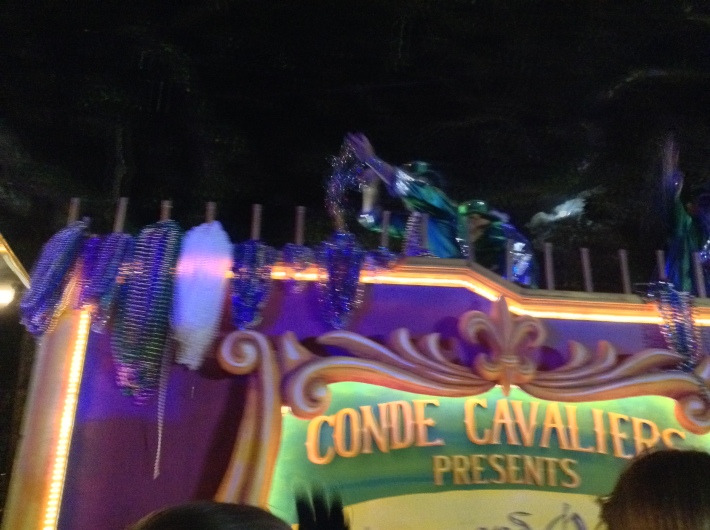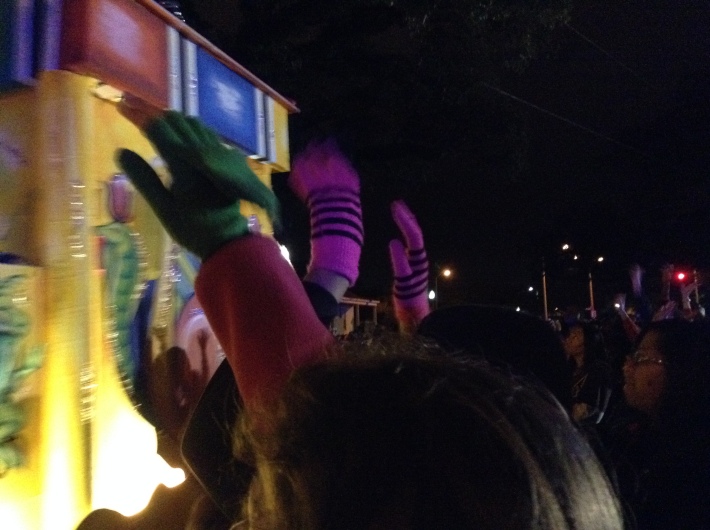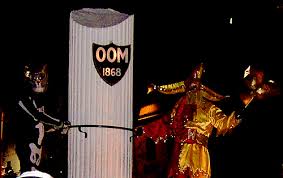If you grow up in a city that celebrates Carnival, then you know—even if only subconsciously—how deep it goes. It’s not a bunch of parades. It’s not a single day of letting loose. It’s a season—weeks long and months in the making, and, even more, it’s an organizing principle of the place where you live. It’s an energetic plane between Christmas and Lent, between life and death—it’s a bardo—a time between incarnations.
I grew up in Mobile, the home of Mardi Gras–the older (and only slightly more restrained) sister to New Orleans’ Carnival ritual. Traditionally, the season begins around the Epiphany and runs up to Ash Wednesday. In Mobile it starts later than this, usually about 2 ½ weeks before Ash Wednesday. Mystic societies who parade have a scheduled date and parade route and almost always hold a ball, by invitation only, after the parade. The groups work year round on their floats, lining up marching bands, buying throws, organizing their parade and parties. Most mystic societies have a queen and the city’s Carnival Association has an entire cast of royalty each year—a king, queen, knights, ladies-in-waiting, equerries, and pages—all chosen from old Mardi Gras families. The courts parade as well and hold a coronation. There’s even a juvenile king and queen with their own court. The suits, gowns, and trains throw an army of seamstresses into high gear for the months and weeks leading up to Mardi Gras. Enormous amounts of money are spent along with countless hours of preparation, creative energy, parties with too much food and generous quantities of alcohol—equal measures of tradition and excess.
From the outside looking in, it’s just some parades. But from the inside…it’s as busy as Christmas, as significant as Easter. It’s ridiculous and hilarious. As a child it was thrilling—it still is—to go downtown at night (!) with thousands of people lining the streets, everyone pushing and shoving to get close to the barricade, police sirens signaling the start of the parade, masked marshals on horseback throwing silver and gold doubloons, marching bands pounding their bass drums, and then all mayhem breaking loose as a float passes and everyone screams and reaches, athletically, for throws. It’s always a little scary. Always someone nearby who’s had too much to drink, someone who’s too rowdy, always a dangerous element, always, somehow, buffered by an immense sense of humor…it’s a roller coaster ride and you wouldn’t miss it for the world.
The last parade of Mardi Gras, the Order of Myths (known locally as the double-O-Ms), rolls on the evening of Fat Tuesday. The oldest parading mystic society with the oldest money, their emblem float features two masked revelers, Folly and Death. They carry inflated pigs’ bladders and chase each other around a broken pillar of life—each trying to beat the other: Hold on to Mardi Gras! Bring on Lent! In the end Death wins and Carnival fades with the last drum beat.
The next morning, hung over or not, perhaps feeling a little nostalgic but glad it’s all over, you go to mass where ashes are smeared on your forehead and the priest reminds us that we too are as fleeting as this season of masking.





